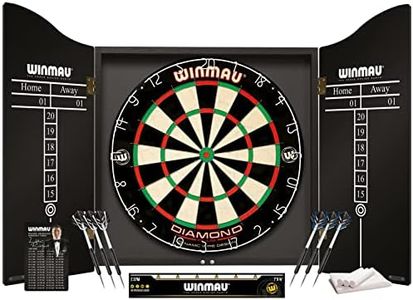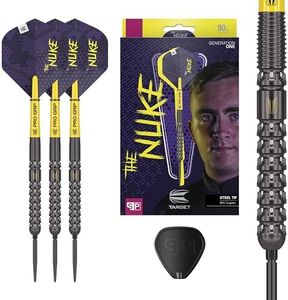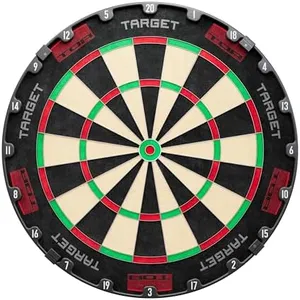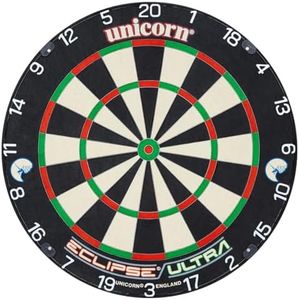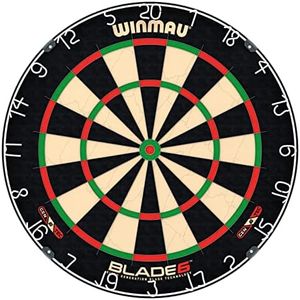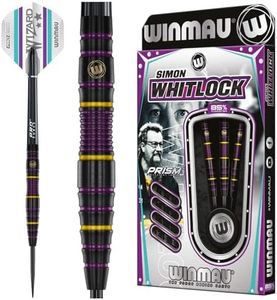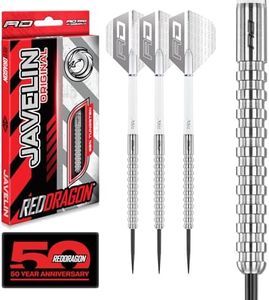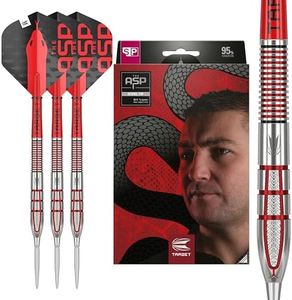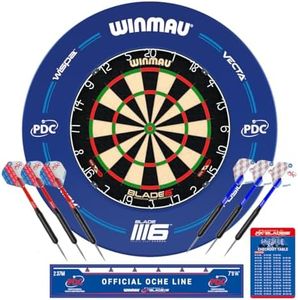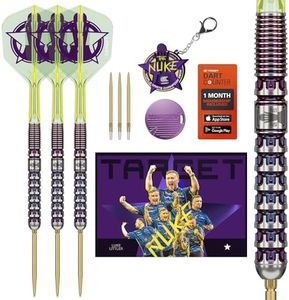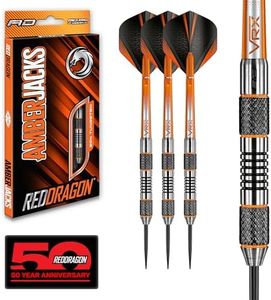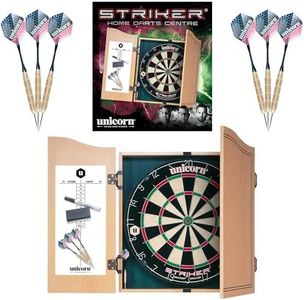We Use CookiesWe use cookies to enhance the security, performance,
functionality and for analytical and promotional activities. By continuing to browse this site you
are agreeing to our privacy policy
10 Best Professional Darts
From leading brands and best sellers available on the web.Buying Guide for the Best Professional Darts
When shopping for professional darts, it's important to focus on the details that affect performance, feel, and precision. The right set of darts can make a significant difference in your game by suiting your unique throwing style and grip. You should pay attention to several key features that impact balance, control, longevity, and comfort. Understanding these features and how they align with your needs will help you make a choice that not only improves your game but also makes playing more enjoyable.Barrel MaterialThe barrel is the main part of the dart that you hold, and its material determines both durability and texture. Common materials include brass, nickel-silver, and tungsten. Brass darts are lighter and cheaper but wear out faster, while nickel-silver is a bit more robust and still cost-friendly. Tungsten is the top pick for professionals due to its density and slim profile, allowing for more accuracy and tighter groupings on the board. If you play frequently or hope to play at a higher level, opting for a higher percentage of tungsten (usually 80% or higher) is a wise choice, while beginners or casual players might find brass sufficient to start.
Barrel WeightDart weight ranges broadly between 14g and 30g, and the right weight is very personal. Lighter darts (14g-20g) fly faster but require more precise throwing, making them popular among experienced players with a lighter touch. Heavier darts (21g-30g) are easier for beginners since they are less likely to stray off course with small errors. To find the ideal weight, it's best to try out different weights and notice which one feels most comfortable and controllable during your throw.
Barrel GripGrip refers to the texture and pattern on the dart's barrel. Some barrels feature deep grooves or knurling for a rougher grip, while others are smoother. The grip affects how securely the dart sits in your fingers and how confidently you can release it. Players with sweaty hands or those who need more traction tend to prefer a more aggressive grip, while those who like a smooth release favor less texture. Think about your usual grip pressure and hand moisture when choosing the right grip level.
Barrel Shape and LengthBarrel shape and length influence both comfort and accuracy. Longer, straight barrels offer more grip area for players who use multiple fingers, while shorter, bulbous barrels are often preferred by players with a compact grip. Additionally, the shape can help promote a consistent hand placement. Match the shape and length to your grip style: if you spread your fingers out, a longer barrel may suit you, but if you have a tighter grip, a shorter or tapered barrel could be best.
Shaft Material and LengthThe shaft connects the barrel to the flight. Shafts come in materials like plastic, nylon, or aluminum, ranging in length from short to extra long. Longer shafts provide more stability but may make the dart feel back-heavy, while shorter shafts can quicken the dart's flight. Beginners are usually comfortable with medium-length nylon shafts, which are forgiving and affordable. Choose the length and material that make your darts feel balanced in your hand and during flight.
Flight Shape and SizeFlights are the tail fins that stabilize the dart in the air. They come in various shapes—standard, slim, kite, etc.—with larger flights offering more drag for a slower, stable throw, and smaller flights making the dart fly faster. If you have a hard, fast throw, smaller or slim flights might work best, while those with a gentler throw benefit from larger, standard flights for extra stability. Try different flight shapes to see which one matches your throwing style.
